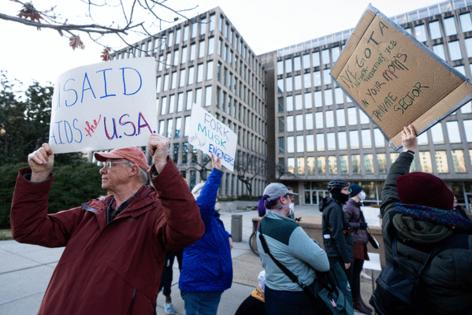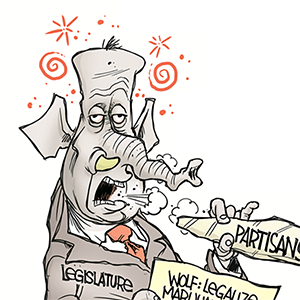Shutdown could bolster White House's legal case for 'reductions-in-force'
Published in Political News
WASHINGTON — The White House is telling agencies to consider mass layoffs for positions that aren’t protected from a partial government shutdown, which is set to begin Oct. 1 if the two parties can’t come to a swift agreement on a stopgap funding patch.
Is that legal? The answer appears to be yes, though it’s complicated.
A federal funding lapse in fact looks to be one of the stipulated reasons why “reductions-in-force” are allowed, stemming from statutory authorities going back to World War II-era veterans preferences and a 1966 law codifying organization of the federal government.
The latter grants regulatory authority to the Office of Personnel Management, which prescribed RIF regulations starting in 1986. The rules for “release” of covered employees cite a handful of reasons, including reorganization of an agency, a lack of work and “shortage of funds.”
The OPM website says this: “In fact, virtually all RIF actions are the result of a reorganization (e.g., the agency reorganizes as the result of a shortage of funds, lack of work, restructuring, etc.).”
A “shortage of funds” applies to a shutdown, at least for agencies and programs that are unable to expend federal funds due to the Antideficiency Act, which bars them from operating without an appropriation. As a result, some experts say a shutdown may give the administration more solid legal backing for mass government layoffs than they’ve cited previously.
“Anticipated budget shortfalls and cuts are, perhaps, the strongest justification for an agency to engage in a reduction-in-force,” said Nick Bednar, a University of Minnesota Law School professor who specializes in federal employment law.
The key, Bednar and other sources said, is in implementing the reductions according to the proper procedures laid out in OPM regulations. And that’s when things start to get a little more complicated.
For starters, agencies need to provide at least 30 days’ notice to affected employees. Typically it’s a 60-day requirement, but OPM is allowed to cut that time in half.
This raises a question of what happens during the 30-day timeframe if the government reopens.
The Office of Management and Budget memo telling agencies to consider RIFs says if the funding lapse ends, they should “revise their RIFs as needed to retain the minimal number of employees necessary to carry out statutory functions,” with OMB approval.
So it’s possible that, if a shutdown lasts fewer than 30 days, there would be minimal impact. If it goes longer than that, some may still be subject to RIFs.
There are also statutory “retention factors” that agencies must still consider, as with all RIF scenarios, including employment tenure with the federal government, veterans preferences and performance ratings. Though if entire programs are shuttered, those requirements may carry less weight.
“There’s a strong possibility that the [Merit Systems Protection Board] or a court would uphold at least some of these RIFs so long as the proper procedures are followed,” Bednar said, referring to the agency that adjudicates terminated worker appeals.
Another potential complication is what happens to the RIF process if human resources officers are swept up in the layoffs. Some believe HR staff would be “excepted” in a shutdown, however, since their roles would be critical in dealing with workers who are furloughed or laid off.
The flip side
Others believe fired workers may have a sound legal argument in their defense in a 2019 law — enacted towards the end of the 35-day shutdown that was the longest in history, so far — that guaranteed back pay for federal workers who missed paychecks during a lapse.
Eloise Pasachoff, a Georgetown Law professor who specializes in budget and appropriations law, said that 2019 law clearly expressed the intent of Congress that workers shouldn’t be penalized simply because of lawmakers’ failure to pass appropriations bills.
“Terminating their employment seems like the opposite of making sure they get paid as soon as possible,” Pasachoff said. She also pointed to a Supreme Court precedent which has long held that a “mere failure to appropriate does not repeal or discharge an obligation to pay.”
Sam Berger, of the left-leaning Center on Budget and Policy Priorities, argues that a shutdown doesn’t provide a new set of powers for the administration to employ.
“A shutdown provides no new legal authority to engage in widespread firings, nor is there any sound management or policy reason to do so,” said Berger, a former Biden administration budget official. “The memo is best understood as a threat from the Administration to hurt the American people if they don’t get their way.”
_____
Peter Cohn contributed to this report.
_____
©2025 CQ-Roll Call, Inc., All Rights Reserved. Visit cqrollcall.com. Distributed by Tribune Content Agency, LLC.
























































Comments